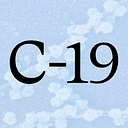How to Wear Your Mask ‘Knotted and Tucked’
An easy bit of ‘face origami’ adds more security to a disposable mask
The Centers for Disease Control recently updated its mask guidance. The latest rules recommend taking certain steps to ensure your mask fits tightly on your face and adding layers for additional protection. Among the CDC’s recommendations for making your mask fit more snugly is the curious suggestion to “knot and tuck ear loops of a three-ply mask.”
This technique is known as the “knotted and tucked” method. It’s meant to be used with disposable medical masks, also known as surgical masks. The goal is to close up the gaps on the sides of the mask where the fabric meets your cheek.
Unfortunately, the CDC’s instructions are not the most intuitive — one of my colleagues aptly referred to the technique as “face origami.” But the process is easier than it seems, and it goes a long way in ensuring a tighter fit. Here’s how to do it.
Step one: Fold your mask in half lengthwise.
Step two: With the mask still folded, take one ear loop and knot it, keeping the knot as close as possible to the edge of the mask. Repeat on the other side.
Step three: Unfold your mask. It should look like a little canoe with holes on either end. Fold the extra fabric on each end inward, as if to close up the canoe.
Step four: Put on the mask, taking care to make sure the fabric you folded inward stays folded. This should prevent any air from coming in through gaps on the side of your mask.
Remember that the point of any mask is to prevent respiratory droplets from getting into your airways. Closing up gaps on the sides of your mask and on either side of your nose can go a long way in keeping you protected.
Read the rest of the CDC’s tips for improving your mask fit here, and check out the stories below for more information on safe mask-wearing:

